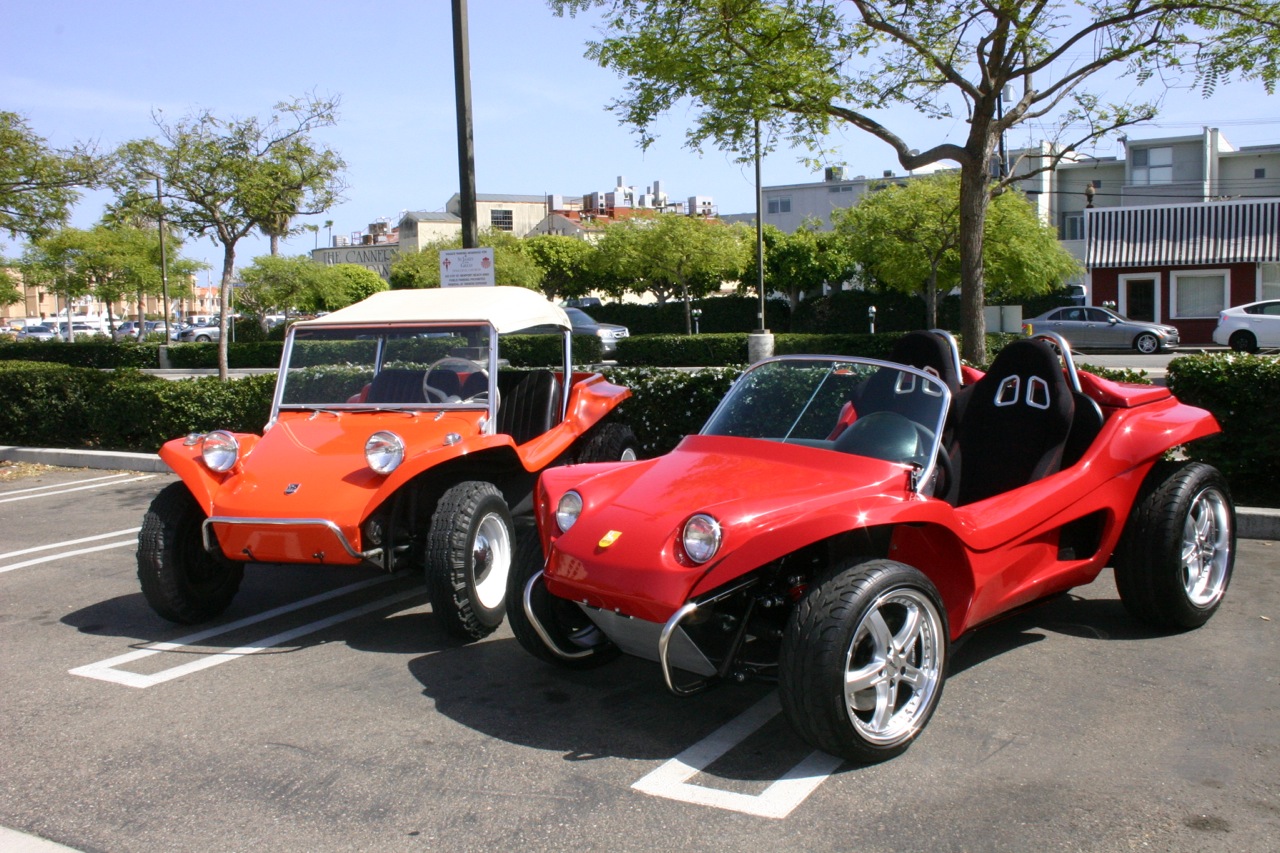
Newport Beach, CA, May 8, 2014 – The Manx is one of the world’s most iconic vehicles. Name another car that looks as contemporary today as it did 50 years ago.
It’s a design that transcends time and borders. It’s as beloved in Europe, Australia and the Middle East as it is in all of the Americas.
And it’s ageless in its appeal. Five years old or 95, there is no generation gap with a Manx.
It’s simple in its elegance and elegant in its simplicity.
A perfect blending of form and function.
And it sprang from the creative genius of one incredibly talented individual: Bruce Meyers.
The prototype electric Manx unveiled today is one of several energy-saving and environmentally friendly models Rev-TEC and Meyers Manx will introduce in the near future.
We call them the Manx Vs. All will be powered by Rev-TEC.
They are the right vehicles for today . . . and tomorrow.
Every Manx V will exude typical Meyers Manx hug-me styling. Pure, simple, emotional, lovable, functional.
While some Manx V models will fit the definition of kit car, most will fit the category of Neighborhood Electric Vehicles (NEV).
In most states an NEV is defined as a Low Speed Vehicle (LSV). It can be legally driven at speeds up to 25 mph on public roads with speed limits no higher than 35 mph. In a few states those speed limits are 35 mph and 45 mph, respectively.
To qualify as an NEV, Manx V models will have to pass specific Federal and State regulations.
About Rev-TEC Corp
Rev-Tec Corp is a Business Development Company headquartered in Las Vegas, Nevada that is focused on the design, development and deployment of energy-efficient and environmentally conscious infrastructure support technologies. We design, develop, manufacture, market and distribute application specific battery/energy storage systems utilizing Rev-TEC’s proprietary technologies and intellectual property in large lithium-ion cells and battery systems. Each system is specifically designed to out-perform the respective industry standard with regards to performance, safety and cost efficiency. Rev-TEC also manufactures task-oriented electric vehicles.
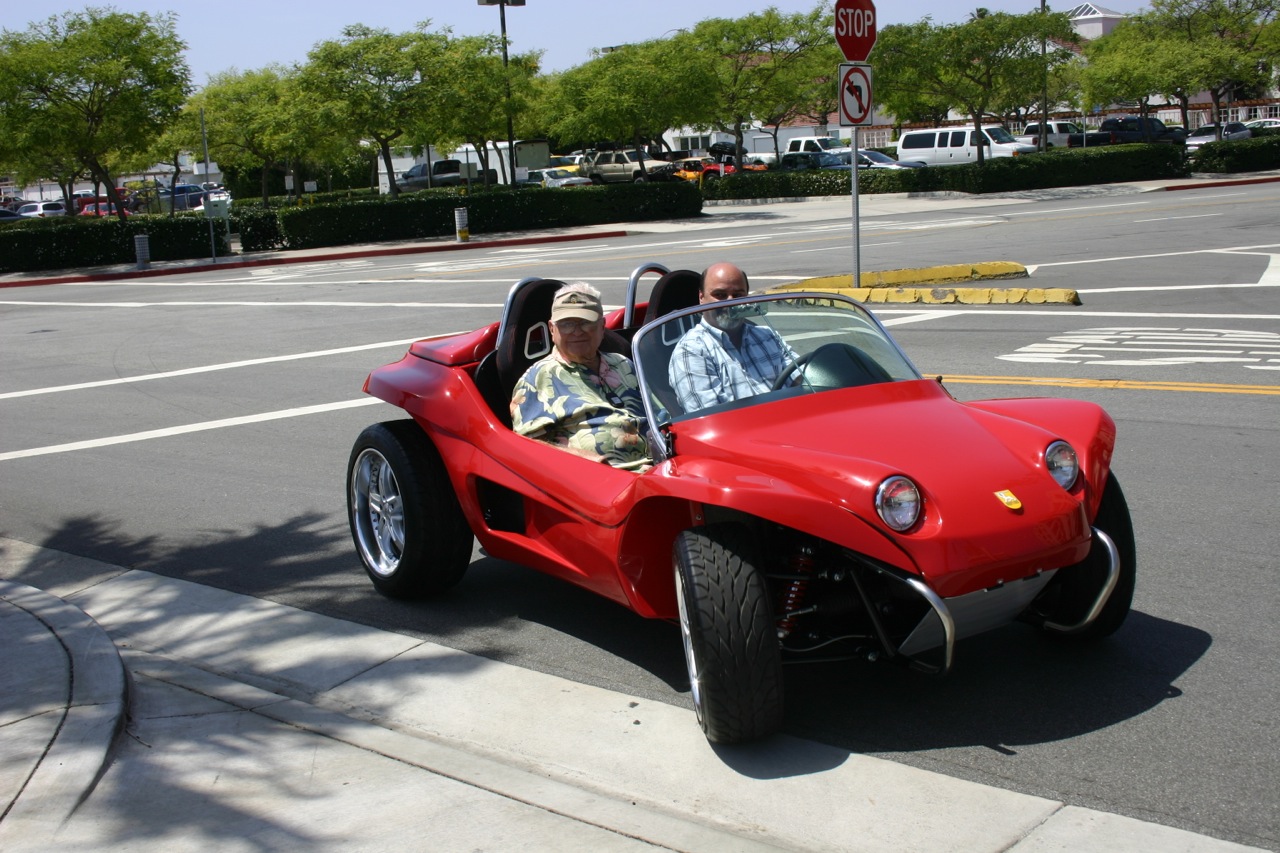
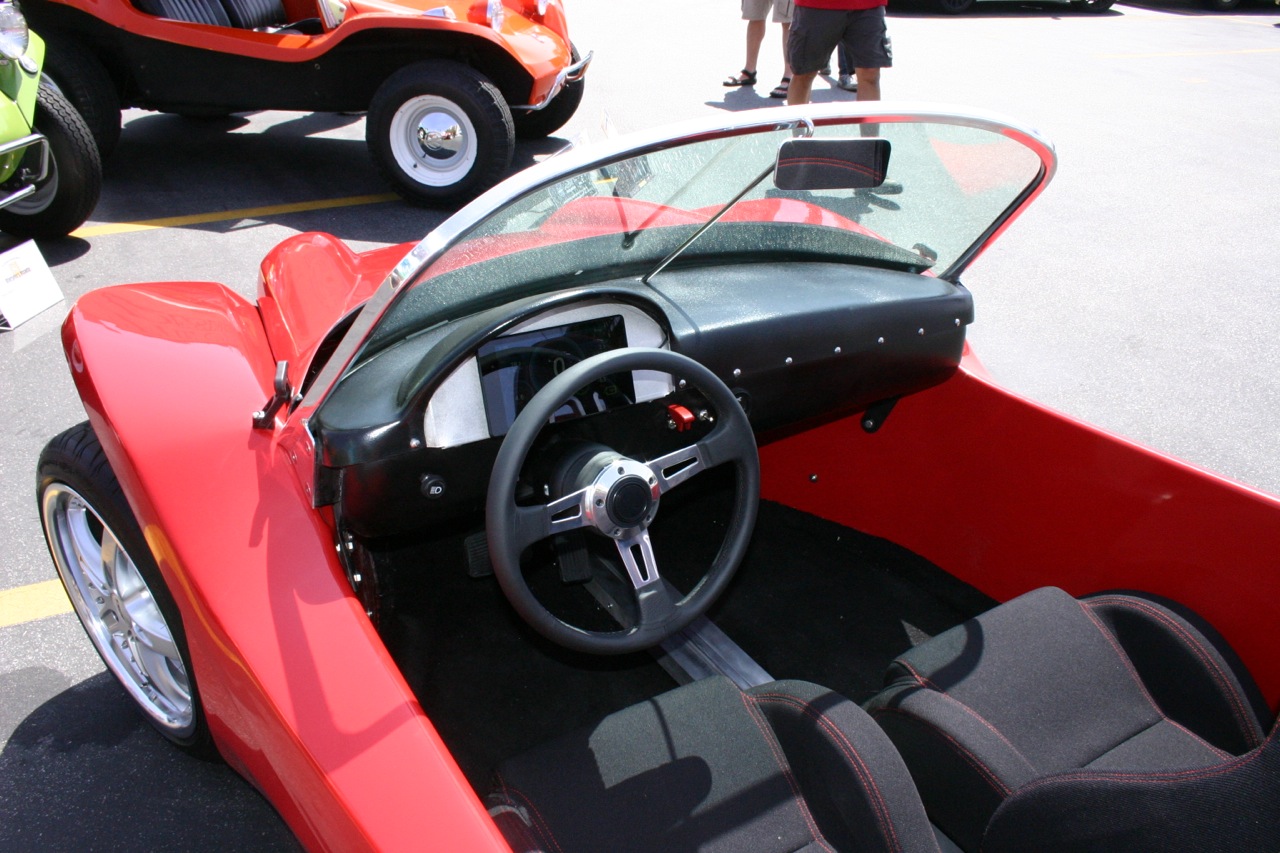
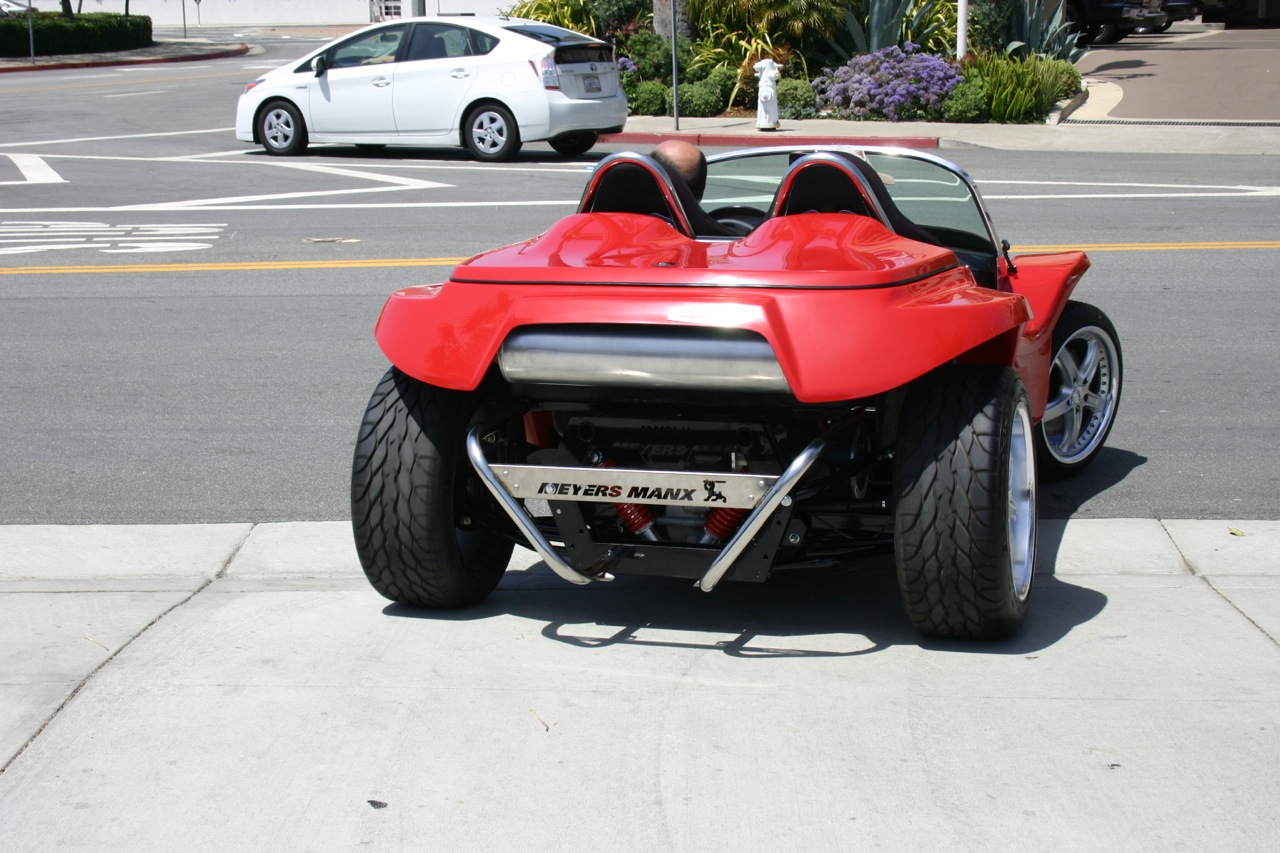
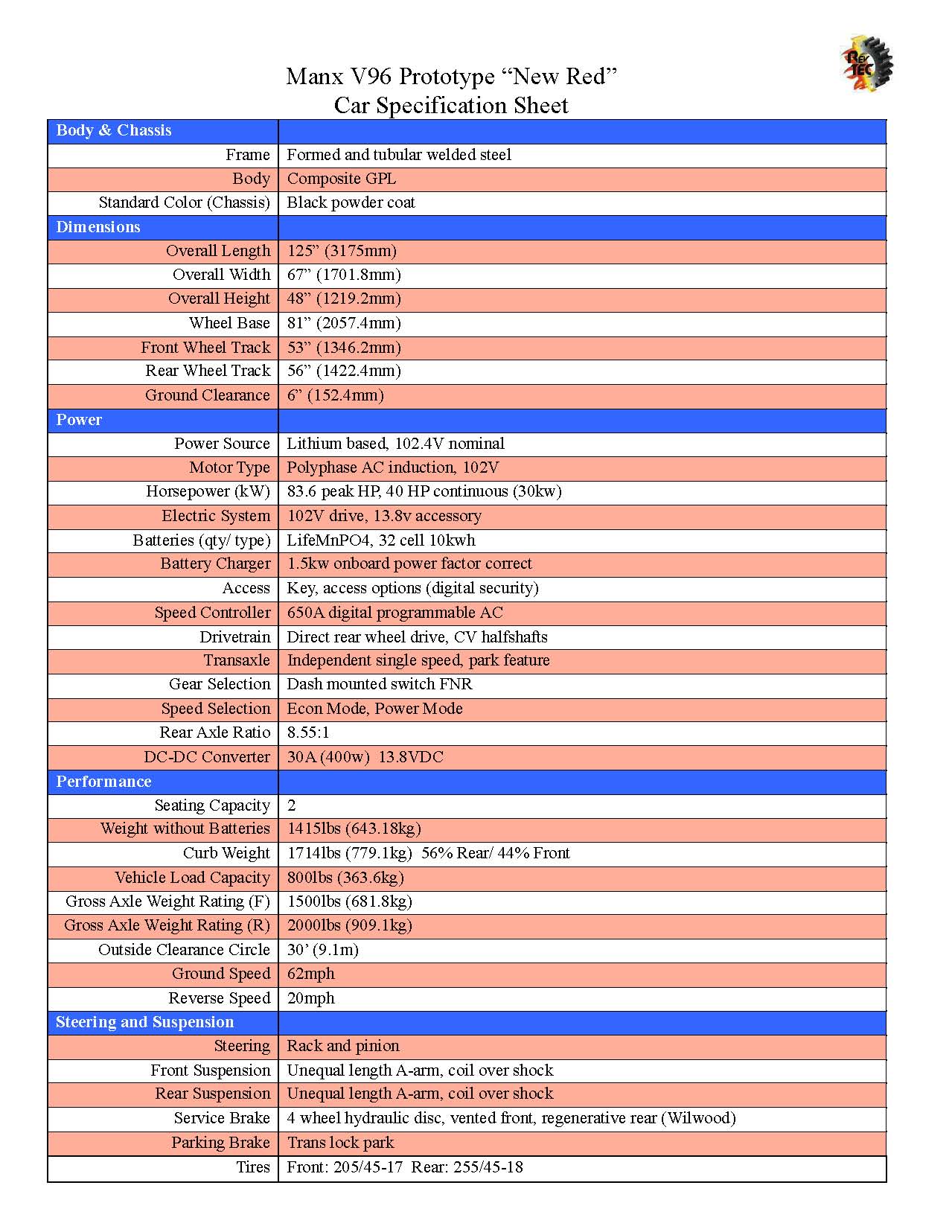
About Meyers Manx
B.F. Meyers & Co., first based in Newport Beach, CA, was established in 1964 with the completion of Old Red, the first-ever fiberglass dune buggy. After only 12 of these monocoques were produced, Bruce Meyers changed the format to use the Volkswagen Beetle floorpan for its sub-structure. The Meyers Tow’d, Manx SR and Manx 2 rounded out the menu of the companies offerings. Bruce Meyers left the company in 1970 and the company ceased operations in 1971.
In 1999, Bruce and Winnie Meyers reopened this fiberglass kit car company under the name of Meyers Manx Inc. Headquartered in Valley Center, CA, it opened with an offering of the Classic Manx, signature series of 100. Bruce & Winnie Meyers started the International “Manx Club” in 1994. Today, the club boasts over 4,300 members and was turned over to its members in 2008. Meyers Manx Inc. now offers the Manxter 2+2, Manxter DualSport, Kick-Out Traditional and Kick-Out S.S. for a widespread menu of kit cars to build. For more information please visit meyersmanx.com
On the weekend of May 3-4, 2014, Old Red was recognized by the HVA (Historic Vehicle Association), as the second automobile to be inducted into a permanent archive of significant historic vehicles within the Historic American Engineering Record (HAER) and a separate, newly created National Historic Vehicle Register, through a collaboration with the US Dept. of the Interior, National Park Service, Heritage Documentation Programs and the Library of Congress. For more information, please visit www.historicvehicle.org

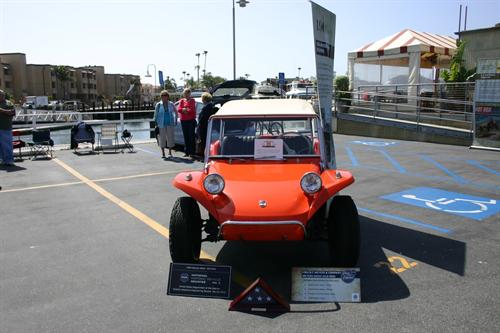
Meyers Manx History
The iconic Meyers Manx is celebrating its 50th anniversary this year. Its creator, Bruce
Meyers, celebrated his 88th year on mother Earth in March at the Amelia Island Concours
d’Elegance.
Bruce’s life story reads like a real life version of Mark Twain’s The Adventures of Tom
Sawyer. He grew up in South California’s South Bay. Think Hermosa, Manhattan and
Redondo Beaches. He had a love for music, art and surfing.
The Tom Sawyer connection? Swap the Pacific Ocean for the Mississippi River.
Substitute an aircraft carrier and a home-built 42-foot catamaran for Tom Sawyer’s raft.
And replace Tom’s paint brush and white picket fence with Bruce’s chopper gun and a
fiberglass hull. That’s a good start.
Returning to Southern California after heroic naval service during WW II, Bruce worked
with Dale Velzy, first commercial surfboard builder, where he learned to work with
fiberglass. Later, Bruce worked with Jensen Marine in Newport Beach where company
owner, Jack Jensen, pounded into Bruce the guiding principles that have defined his
designs: Make it simple and efficient. Don’t add stuff that just adds cost.
In 1963 during a trip to Pismo Beach with a sand sailer, Bruce came across a bunch of
water pumpers—old, heavy, water-cooled Fords and Chevys—driving in the dunes. But
not going anywhere fast. However, Bruce’s attention was mostly drawn to the driver
who seemed to be having a whole lot more fun behind the wheel of a stock VW Beetle
minus the body. This was the inspiration for the Meyer’s Manx. When Bruce returned to
Newport, he had already mentally sketched a small, light, short-wheelbase, rear-engine
vehicle with balloon tires for playing in the dunes.
Using his skill and experience with fiberglass boats, Bruce designed a hull or tub using
monocoque construction: The fiberglass chassis and body are one. Bruce bolted stock
VW suspension to the shell, swapping the Beetle’s rear torsion bars for adjustable Air
Lift Springs. He installed a 1.2-liter VW Beetle flat-4 engine and 4-speed transmission
behind the driver. That first Manx, later named Old Red, weighed about 1200 lb sans
driver. With excellent traction thanks to the rearward weight bias, a short 78-inch
wheelbase plus oversize balloon tires, Old Red could fly over rough terrain with ease and
speed.
Desert racing was in its infancy during the mid-Sixties, consisting of a few motorcycle
elapsed time records racing from Tijuana down to La Paz at the southern end of Baja,
Mexico. It was a distance of around 1000 miles and Bruce and his friend Ted Mangels
decided to challenge the record in Old Red. Bruce and Ted demolished the existing
record of 39 hours by more than five hours, ushering in an era of utter dominance of offroad
racing events by the Manx.
Note, those green cylinders at the front and sides of Old Red were not some early version
of safety bumpers and side impact beams or, as some thought, to allow Old Red to double
as a lemonade stand. Back in the day you carried your own gasoline when you drove in
Baja because there were no guaranteed sources for fuel along the length of the peninsula.
Old Red was the first of only 12 Manxes built using monocoque construction.
Manufacturing the monocoque design proved time consuming and costly and one year
into the project, Bruce’s accountant pulled out a spreadsheet covered with red ink: The
kits cost more to produce than what Bruce could sell them for. Pass Go but don’t collect
$200.
That’s when Bruce remembered the bare VW floor pan he had seen at Pismo. By cutting
a 14¼-inch section out of the stock VW pan and welding the two halves back together,
Bruce had an ideal 80-inch wheelbase platform to which a buyer could bolt a Manx body.
Essentially, all a Manx buyer had to do was purchase a donor Beetle, remove the body,
shorten the floor pan and the brake and fuel lines and—voila—he had a Manx. Virtually
all the components needed, except for the flat windscreen, head lights and a few other
odds and ends, which Bruce provided, could be cannibalized from the VW.
This has the makings of a Horatio Alger story.
What wasn’t to love about a Manx? Start with the styling: Original, huggable. Iconic in
its simplicity and functionality. Nothing automotive represents the freedom and just-do-it
attitude of California in the Sixties—surfing, the Beach Boys, off road racing—like the
Manx. To me, the Manx represents engineering elegance. To the world, it represented a
huge success.
Unfortunately, Bruce’s design was simple to copy. Rip-off artists “took a splash” off the
body and churned out thousands of cheap imitations. Bruce attempted to protect his
design patents in court, but the judge ruled against him. Game over. Bruce lost the
business. Of the estimated quarter million dune buggies that have been produced
worldwide, only 5,280 of those kits were actually from B. F. Meyers and Co.
But Bruce never lost his love for the Manx, and he resurrected the business in 1999 as
Meyers Manx Inc. with the assistance of his wife, Winnie. Today, you can purchase kits
to build 2-seater Kick-Outs or the Manxter 2+2 and Manxter DualSport, still based on the
Beetle floor pan.
More recently, Bruce was approached by a company in Las Vegas, Rev-TEC, which is
creating Manxes powered by electric motors. So Bruce, along with his first designer,
Stewart Reed, who designed and worked with Bruce on the Manx SR, have accepted the
challenge. They are translating the iconic Manx design DNA, which looks as fresh and
huggable today as it did 50 years ago, into the EV world of the 21st century.
